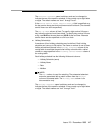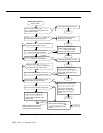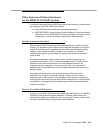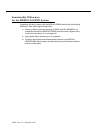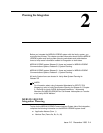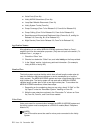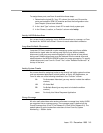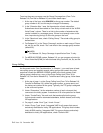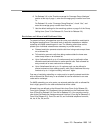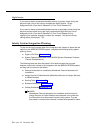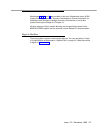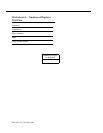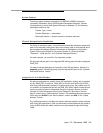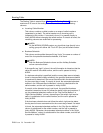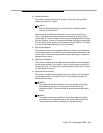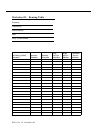
Issue 2.0 December 1995 2-5
6. For Release 3.0, in the “Provide coverage for Coverage Group Numbers”
section at the top of page 1, enter the coverage group number from Form
7c.
For Release 2.0, under “Coverage Group Receiver,” check “Yes,” and
enter the coverage group number from Form 6d.
7. Use the default settings for the remaining options on page 2 of the Group
Calling form (Form 7d for Release 3.0; Form 6e for Release 2.0).
Restrictions and Allowed and Disallowed Lists
To prevent toll fraud, all extensions used for voice ports should be restricted at
the highest practical level. The actual level of restriction depends on whether
outcalling and AMIS networking are in use. The following restrictions can be
placed upon individual extensions as necessary to provide security:
■ Outward restriction prevents outside calls from being made except those
on an allowed list.
■ Toll restriction prevents calls from being made outside the home area
code except those on an allowed list.
■ Up to 8 allowed lists of up to 10 numbers each can be defined to allow
otherwise restricted extensions to make specific calls. Each allowed list
entry consists of an area code and/or exchange.
■ Up to 8 disallowed lists of up to 10 numbers each can be defined to
prevent extensions from making specific calls. Each disallowed list entry
consists of up to 11 digits including “wild card” digits.
One way of restricting outcalling on voice ports is to specify outward restriction
with an allowed list. Each entry on an allowed list can be restricted to an area
code and/or exchange.
For AMIS networking on voice ports, use outward restriction with an allowed list
that is highly specific to the other switches that will be called.
Allowed Lists are defined on the Allowed Lists form (Form 6e for Release 3.0;
Form 6g for Release 2.0). Disallowed Lists are defined on the Disallowed Lists
form (Form 6f for Release 3.0; Form 6h for Release 2.0). You may also need to
refer to the Call Restriction Assignments and Lists form (Form 6g for Release 3.0;
Form 6i for Release 2.0), Forms 5c and 5d, and individual telephone forms 4b,
4d, 4e, 4f, 5a, 5b, and 5c.



